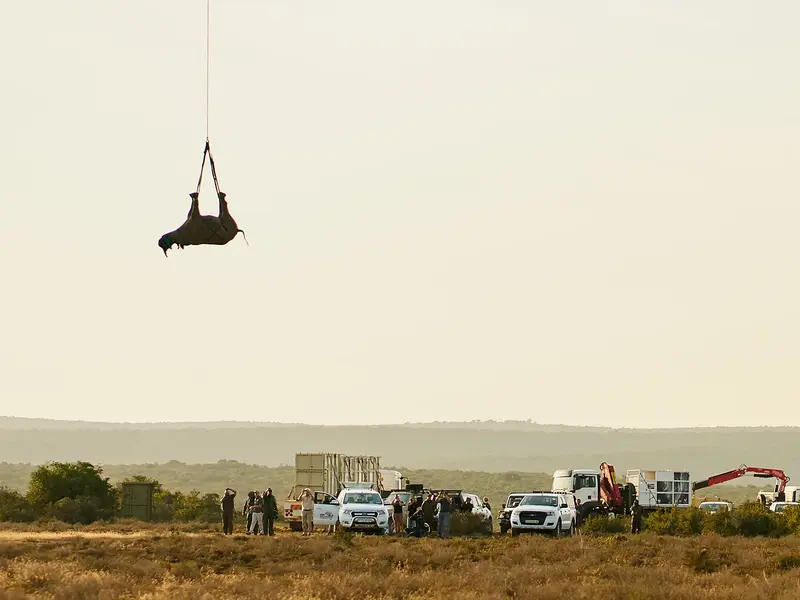Saving Rhinos by Helicopter
Sunday, 2025/03/30275 words4 minutes562 reads
In a remarkable fusion of military technology and wildlife conservation, helicopters once used in the Vietnam War are now playing a crucial role in saving endangered rhinos. This innovative approach to rhino translocation has gained significant traction in South Africa, Namibia, and Botswana over the past decade, offering a lifeline to critically endangered species like the black rhino.
The process of airlifting rhinos is a meticulously orchestrated operation. It begins with a veterinarian, suspended from a helicopter, administering a potent combination of opioids and tranquilizers to sedate the targeted rhino. Once immobilized, the animal is swiftly prepared for transport. Soft, durable straps are secured around its ankles and connected to a single rope, which is then attached to the underside of the helicopter.
Contrary to initial concerns, the seemingly precarious position of being suspended upside down is actually beneficial for the rhino's respiratory function. The animal's unique anatomy allows for comfortable breathing in this inverted state, with the weight and build of the rhino enabling it to extend its head and neck downwards, thereby straightening the spine. Furthermore, the rhino's horn serves as a natural stabilizer during flight, akin to a tail feather, significantly reducing the risk of unwanted rotation.
This method of translocation has proven invaluable in rhino conservation efforts. It allows for the rapid relocation of rhinos to areas inaccessible by road, facilitates genetic diversity among isolated populations, and provides a means of protecting these magnificent creatures from the persistent threat of poaching. While the sight of a suspended rhino may initially appear disconcerting, this approach represents a groundbreaking advancement in wildlife conservation techniques, offering hope for the future of endangered rhino species.
